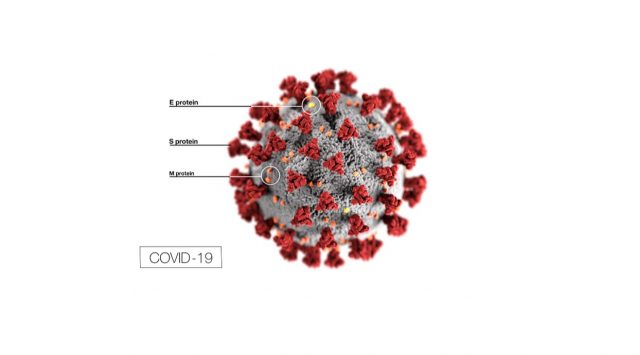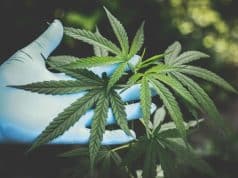How does the COVID-19 virus spread among people?
The causative agent of this disease is the SARS-CoV-2 virus, which spreads between people in different ways.
The source of the virus can be the mouth or nose of an infected person, from where the virus is released with tiny fluid particles during coughing, sneezing, talking, singing, or breathing. These particles range in size from larger respiratory droplets to smaller aerosol dust. (the information has been taken from medical brands)
Available scientific evidence shows that the virus spreads mainly between people in close contact with each other, usually within a distance of up to 1 meter (a small radius). Infection can occur by inhaling viral aerosol particles or droplets or by direct contact with the eyes, nose, or mouth.
- The spread of the virus also occurs in poorly ventilated and/or crowded rooms where people tend to stay for long periods of time. Under these conditions, the cause of infection is the presence of viral aerosol particles in the air or their movement over a distance of more than 1 meter (large radius).
- In addition, viral infection is possible by touching contaminated surfaces and then touching the eyes, nose or mouth without first cleaning the hands. Further studies are underway to further investigate the process of virus spread and to determine which conditions are most dangerous. In addition, new variants of the virus and the reasons why some of them are more transmissible are being investigated.
When do infected people transmit the virus?
Regardless of the presence of symptoms, infected people can be contagious and the virus can spread from them to other people.
Laboratory data suggest that infected people may be most contagious just before symptoms appear (namely, two days before symptoms appear) and at the beginning of the illness. People with severe diseases may remain infectious for longer periods of time.
Although those who never develop symptoms can also transmit the virus, it is still unclear how often this happens, and more research is needed in this area.
Is there a difference between those who have no symptoms at all and those who will have them soon, because in both cases there are no symptoms?
In both cases, we are talking about people who have no symptoms. The difference is that some people who are infected never have symptoms for the duration of the disease. Others have no symptoms yet but will have them later.
Are there conditions in which the COVID-19 virus can spread more easily?
Yes, any situation in which people are close to each other for long periods of time increases the risk of transmission. Indoor areas, especially those with poor ventilation, have an increased risk as opposed to open areas. The risk of transmission also increases with activities involving the discharge of particles from the mouth, e.g. singing or breathing rapidly during exercise.
In this regard, the “Three P’s” rule should be remembered, denoting places where COVID-19 infection occurs much more easily:
Places of great congestion;
Places of close contact, especially those in which people talk to each other at close distances;
Places that are confined, enclosed, and poorly ventilated.
The risk of spreading COVID-19 is especially high when the three P’s overlap.
Healthcare facilities where patients are treated for COVID-19 are characterized by an increased risk of infection during medical procedures called aerosol-generating procedures. They can produce tiny droplets capable of remaining in the air for long periods of time and spreading over distances greater than a social distance (usually 1 meter). Therefore, healthcare workers who perform such procedures or are in the rooms where they are performed should take special precautions against airborne infection. This includes the use of appropriate personal protective equipment, such as respirators. For the same reason, no visitors are allowed in the rooms for these procedures.
How can I reduce my risk of being infected with COVID-19?
There are many things you can do to protect yourself and your loved ones from COVID-19. To reduce the risks, you need to be aware of them. Follow the basic precautions below.
- Follow local guidelines. Find out what national, regional, and local guidelines are available so that you have the most up-to-date information for the area where you are.
- Keep a social distance. Stay at least 1 meter away from people around you, even if they have no visible symptoms of the disease, because people may be asymptomatic carriers of the virus.
- Wear a mask. A well-fitting three-layer mask should be worn, especially if the distance cannot be maintained or when leaving the house. Wash your hands before putting on or taking off your mask.
- Read the material on the proper use of masks.
- Avoid crowded places, poorly ventilated indoor spaces, and prolonged contact. Spend more time outdoors.
- Ventilation is important. While indoors, open windows to increase the amount of air coming in from outside.
- Avoid touching surfaces, especially in public places or health care facilities, as they may have been touched by people infected with COVID-19. Wipe surfaces regularly with standard disinfectants.
- Wash your hands more often with soap and water or wipe them down with an alcohol solution. If possible, carry a bottle of this solution with you and use it often.
- Cover your elbow or a tissue when you sneeze or cough and throw the used tissues away at once. Then wash your hands or wipe them with an alcohol solution.
- Get vaccinated. When it’s your turn, be sure to get vaccinated. Follow local vaccination guidelines and recommendations.

A professional writer with over a decade of incessant writing skills. Her topics of interest and expertise range from health, nutrition and psychology.




